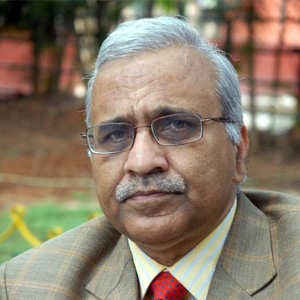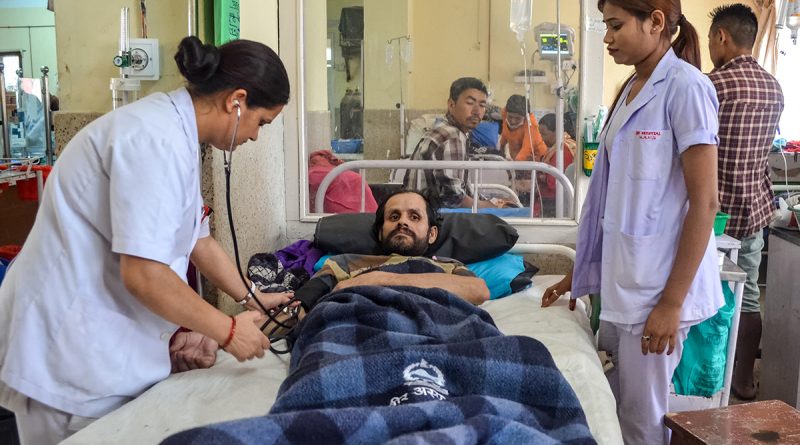IS HEALTH CARE REALLY EXPENSIVE?

By Dr Girdhar Gyani
Major share of healthcare is provided by private sector in India. There is general perception that private healthcare is expensive. Despite this, it’s an irony that section of private hospitals are still struggling to achieve profitable EBIDTA, more so if it they have to adhere to patient safety and other statutory compliances.
When India got independence in 1947, the private sector’s share in delivery of healthcare was limited to 8% and that too largely by charitable hospitals. It was perceived by policymakers that healthcare needs of population would be met by public sector hospitals. But as time went by, government could not keep pace with growing population and willy-nilly allowed the entry of private sector.
 Today 70% of OPD services and 60% of IPD services are being met by private healthcare sector. India is way behind the target of providing universal health coverage by way of making healthcare available, accessible, affordable and acceptable. We have less than 1-bed per 1000-population as against the WHO norm of 3-bed per 1000. Indian healthcare, therefore, is largely a supplier driven market. This should make healthcare sector as profitable market, but the trends show that the operational cost of the private hospital is too high to make healthcare business sustainable, more so if they are to comply with all quality and safety standards.
Today 70% of OPD services and 60% of IPD services are being met by private healthcare sector. India is way behind the target of providing universal health coverage by way of making healthcare available, accessible, affordable and acceptable. We have less than 1-bed per 1000-population as against the WHO norm of 3-bed per 1000. Indian healthcare, therefore, is largely a supplier driven market. This should make healthcare sector as profitable market, but the trends show that the operational cost of the private hospital is too high to make healthcare business sustainable, more so if they are to comply with all quality and safety standards.
What is the real cost of delivery of healthcare? It has not been calculated as it is, indeed, a complex process. There are so many variables and so many permutations and combinations that make costing difficult. Efforts have been made to work out package costs for various procedures. Here again depending upon, whether the hospital is secondary care or tertiary care, whether it is single specialty or multi-specialty, whether hospital is located in tier-I, II or III city, the package costs will be different. Some of the insurance companies have tried to come out with differential packages based on some of above considerations, but these have not met the expectations of consumers on one hand and providers on the other. In case of some of the government health insurance schemes, the costing of various procedures has been fixed on the basis of L1 quote from the tenders invited from private hospitals. This method in many cases can result into irrational and illogical pricing for some of the procedures. For example, a 50-beds nursing home will quote much lower price for a particular procedure due to low overheads as compared to 300-beds super-specialty hospital and such a price will just not be viable for the latter.

Leaving aside the arithmetic of costing, there is general perception that healthcare is expensive, for the simple reasons that common man does not budget for it. Sickness is never anticipated and is considered as rare (not likely to happen) event. Under the circumstances, the cost of treatment for major ailments appears deceptively high. Other reason for such a perception is that government run community health centres or hospitals extend free healthcare services. We do not realize that FREE healthcare is actually not FREE. It comes from the tax payer’s money. As we do not keep account of the actual cost of delivery of healthcare by government-run institutes, the perception that private healthcare is expensive, keeps growing.
The major cost heads factored for computing the operational cost of a procedure are generally taken based on the direct cost comprising of fee to the doctor and cost of drugs and other medical consumables. There are other innumerable indirect costs i.e. salary for allied healthcare workers including nursing staff, lease of land/rent, administrative cost, power and utilities, legal and regulatory compliance and the cost incurred on marketing and advertisement of services. The proportions of these costs vary widely depending upon the category of healthcare institute. As a thumb rule, the costs percentage of net revenue for a typical multidisciplinary private hospital are estimated as follows;
Doctor’s salary – 18-22%
Salaries for allied healthcare workers including nursing staff- 23-30%
Drugs and Medical consumable- 28-32 %
Administrative Cost -18- 20 %
Cost of marketing and advertisement- 5 -7 %
Power and Utilities- 4- 5 %
Repair and maintenance- 2-3 %
Quality and Regulatory compliances- 2- 3%
Based on the above, it is observed that about 50% of the total operational expenditure in private hospitals can be ascribed to the salaries of medical staff including doctors. To keep an edge, private hospitals prefer consultants with super-specialization and beyond. Their fee is much higher. Private hospitals also have higher staff to patient ratios. These hospitals cater to varying demands from different categories of patients, without too much of waiting time. For example a government hospital may have nursing staff per bed ratio as low as 0.25; whereas a typical private hospital will have 0.60-0.75 and it can go as high as 1.25 in case hospital is tertiary care and is accredited under national/international standards. All this will cause huge difference in operating costs for private hospitals and more so for big hospitals.

Capital costs are other reason for differentials in overall costing of private hospitals as compared with the public hospitals. Medical equipment and consumables are getting expensive as they are generally imported by developing countries with hefty taxes in the range of 11-22% by way of excise, custom duty, sales taxes, entry taxes etc. Private hospitals will like to keep pace with current technology and they need to keep provision for their replacement. Land is other major differential as it can cost as much as 30-50% of total project cost. Public hospitals do not need to account for land as they are allotted government land at no cost. Private hospitals incur anything between 20-27% by way of taxes while constructing hospital building. Private hospitals are charged electricity tariff at the commercial rates at par with what is chargeable for cinema halls or shopping malls. No wonder, the operational cost of private sector hospitals is much higher than their counterparts in public sector.
In view of the above-mentioned facts, operational cost in absolute terms will be higher in case of private sector hospital. We do not actually work out the cost of delivery of medical care in a public hospital. The fact that a common man does not budget for healthcare needs, the cost differential from zero cost in public hospital to a substantially high sum at private hospital, creates huge negative perception that he/she is commercially exploited by private sector hospitals. In order to make the perception realistic, it is necessary that we make the consumers aware about the cost of healthcare, be it private or public.
While it is difficult to compute and compare the cost of individual procedure, it will be appropriate to compare the total operational costs per unit bed occupancy between range of hospitals from private and public sectors. This will serve two objectives; one – we will know how the two sectors compare and two – it will show to the common man that there is definite cost of healthcare delivery in a public sector hospital. This will help to a large extent to convey to stakeholders that healthcare does cost and is not FREE. In fact, it will be worthwhile for a public hospitals to raise the invoice to individual patient and simultaneously make the whole cost subsidized in the same invoice. This will have a dramatic effect on society; it will know how much cost the government incurs on individual patient and, therefore, will take treatment more seriously. It will also help reduce the negative perception that private sector is exploitative. With such an exercise, the patient will also know the difference between the costing of two sectors and depending on the need, the patient would be better prepared to pay that extra while going for private sector.
Table-I below shows the actual operational cost incurred in case of some of the public and private hospitals. This has been ascertained after gathering the data from sample of hospitals and for sake of easy assimilation the cost has been shown per bed per day.
For example a public hospital spends on the average between Rs 5000 to Rs 7000 on an IPD patient in general (secondary care) hospital. The same amount in a tertiary care works out to be between Rs 9000 to Rs 17000. When we compare the same for private sector, the cost per bed per day can run from Rs 15000 to as high as Rs. 25000 in a tertiary care hospital depending upon the infrastructure and level of specialization offered. It may also be noted that tertiary hospitals taken in the present exercise are accredited to national/ international standards, which is not the case with public sector hospitals.
Healthcare as a component of overall wellbeing is being seen as basic obligation to be met by the government. In order to fulfill this, government needs substantial spending as percentage of GDP (9% is global average) on healthcare, which is not going to be easy due to the fact that the government also has other priorities including education, environment, infrastructure (power, telecom) etc. Providing UHC to billion-plus population is not going to be an easy task. The governments with its limited resource would have to find innovative measures to make available the healthcare services to the burgeoning population.
In most cases, the governments will take easy route to procure healthcare services from private providers by fixing lowest possible package rates for various medical procedures. Most hospitals for want of sustenance would be forced to compromise on quality and patient safety. Studies have shown that even developed nations are reported to account for hundreds of thousands of medical errors and this can run into millions for developing nations. We need to seriously think about this rather than pushing the subject beneath the carpet and in the process risk millions of innocent lives.
The author is Director General, Association of Healthcare Providers India

